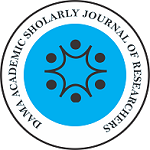Authors: Sisvia Cahya Kurniawati1, Arief Wibowo2, Windhu Purnomo3
1Master Student at Faculty of Public Health, Airlangga University, Indonesia
1&2Lecturer at Department Biostatistics and Population, Faculty of Public Health, Airlangga University, Indonesia
Abstract
The spread of dengue disease is very fast and can result in death in a short time. Efforts that can be done to suppress the spread of dengue disease is to know the cause. One method used to determine the factors that affect the healing of patients with DHF disease is survival analysis. Survival analysis is a method to determine the factors that affect the healing of patients with DHF disease. The influence of these location factors is known as the spatial factor. Bayesian approach is a method that can be used to provide spatial effects in survival models. The purpose of this research is to get spatial survival model on DHF incidence in Balikpapan. This study is a non-reactive or unobtrusive method. Population in this research refers to population area, that is a segment of region containing amount of research unit (the whole existing sub-district in Balikpapan) and all dengue case in hospital located in Balikpapan city. Subjects in this study were DHF patients who underwent inpatient at a hospital located in Balikpapan in April-May 2016. This study shows significant factors that affect the rate of healing of DBD in Balikpapan City, hematocrit level, Long fever before hospitalization and the CAR (l) frailty.
Key words: Spatial Survival, Bayesian, Dengue Hemorrhagic Fever

